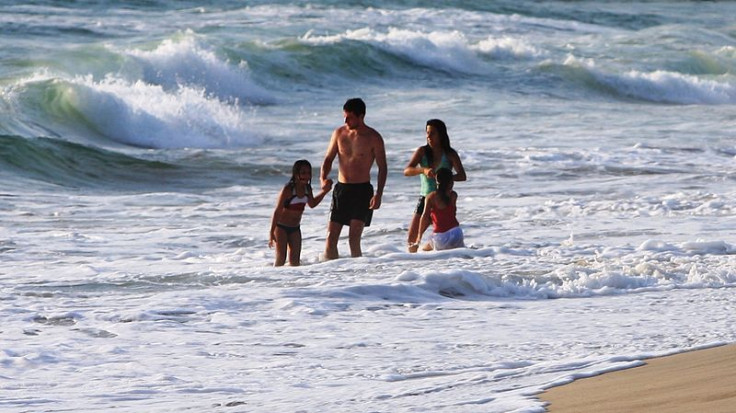Shallow Water Injuries At The Beach Send Many To The Emergency Room

More injuries occur at the beach than previously expected, and they're not all from rip tides and dangerously deep water. According to a study from the Delaware Sea Grant College Program and Beebe Medical Center, many injuries occur in shallow water, at about two feet deep.
Researchers looked at ocean wave-related injuries that ended up emergency room visits over the past three summers, and found that 1,121 injuries required attention. Doctors treated a number of injuries, including simple sprains and strains, fractures, blunt organ trauma, and fractures of the cervical spine — the vertebrae in the neck. Specifically, most people needed treatment for broken collarbones, neck pain, dislocated and separated shoulders, and ankle and knee sprains. There were also three deaths, according to a press release.
"Historically, the magnitude of these injuries is largely underreported," said Dr. Paul Cowan, Beebe's chief of emergency medicine. "This is the first study that documents and tracks the number of significant injuries occurring in the surf zone."
The surf zone is the area between the water's edge and where the waves break. Water in this area doesn't normally go deeper than two feet, making it the perfect place for people of all ages to play. However, it is also the area where waves break. These breaking waves can cause a person playing in the surf zone to be slammed into the water, hitting themselves on the sandy ocean floor.
The researchers looked at data from the Bethany, Dewey, and Rehoboth communities, as well as from state park beaches at Cape Henlopen and Indian River Inlet. They found that arm and shoulder injuries accounted for 35 percent of all injuries, while neck and spinal cord injuries accounted for less than five percent. Neck and spinal cord injuries, which can lead to paralysis and possibly death, were the most life-altering and complex of all.
"So this leads us to believe that a lot of these folks simply don't understand the power of the ocean, or they don't know how to swim in ocean waves and currents," Wendy Carey, of the Delaware Sea Grant Program, said.
This may be true. In addition to this study's results, the United States Lifesaving Association (USLA) estimates that rip currents account for over 100 deaths each year and over 80 percent of rescues performed by lifeguards. Rip tides, also known as rip currents, are powerful, channeled currents of water flowing away from the shoreline, through the surf zone, and past the line of breaking waves. They are the currents that bring water back to the ocean after the surf pushed waves onto the beach, and can be powerful enough to knock someone down.
The USLA also estimated that there were 55 drowning deaths annually at unguarded beaches and 13 at guarded beaches, highlighting the importance of swimming at a beach with a lifeguard. Lifeguards are trained to protect those swimming, and chances are they know the water better. When dealing with ocean water, a person encounters waves, tide changes, the slope of the beach, and strong currents — all of which may change at any second.



























